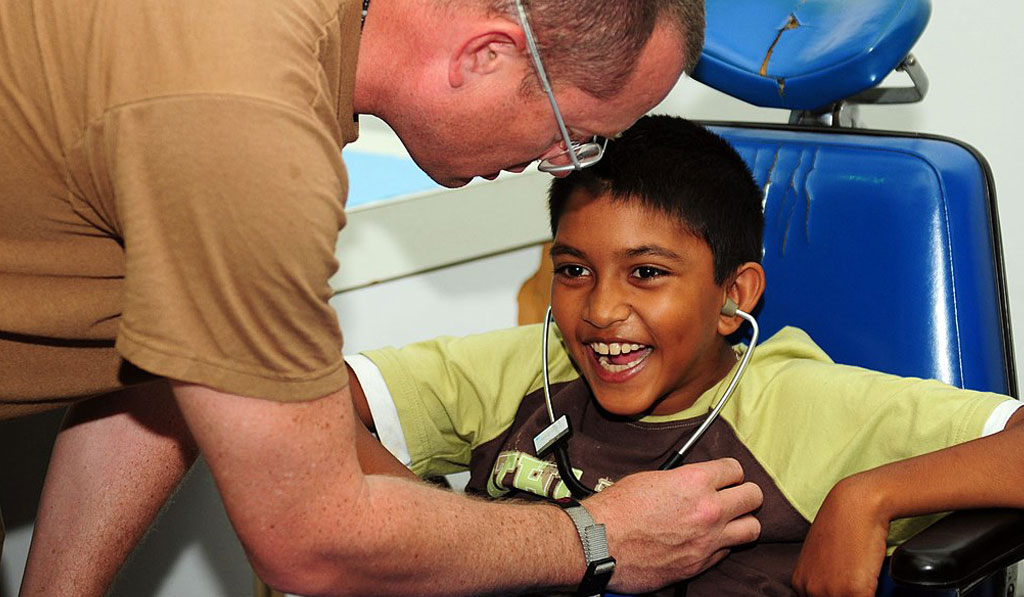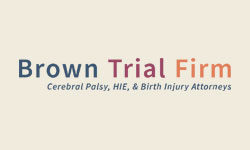Understand the common causes, symptoms, and complications of ataxic CP and when your child may be eligible for compensation through a birth injury claim
Ataxic cerebral palsy (CP), a form of cerebral palsy that’s characterized by problems with balance and coordination, can significantly impact a child’s life. It’s important to understand that if your child’s ataxic CP was caused by medical negligence during pregnancy, birth, or shortly after delivery, you may have legal options.
This article will explore the causes of ataxic CP, the signs to watch for, and how an experienced cerebral palsy attorney can help you get the compensation your child deserves for a brighter future.
What is ataxic cerebral palsy?
Ataxic cerebral palsy represents a relatively rare subtype of cerebral palsy, comprising less than 5% of all CP cases, as highlighted in a study featured in Neurology Clinical Practice.
The hallmark of this condition, as suggested by the term “ataxia,” is an inability to coordinate muscle movements. Ataxic cerebral palsy arises from damage to the cerebellum, the brain region instrumental in managing muscle coordination and balance.
What are the early signs of ataxic cerebral palsy in babies?
The early signs of ataxic cerebral palsy primarily revolve around difficulties with balance, coordination, and motor skills. Recognizing these early signs can be crucial for timely diagnosis and intervention.
Key early indicators include:
- Delayed milestones. Babies might show delays in reaching developmental milestones such as holding up their head, rolling over, sitting up, or crawling compared to their peers.
- Poor muscle tone. Babies may exhibit low muscle tone, often described as feeling “floppy” when held.
- Balance difficulties. Even before walking age, babies may struggle with maintaining balance. When attempting to sit or stand, they might seem more unsteady than expected.
- Difficulty with fine motor skills. Challenges may be observed in activities that require fine motor skills, such as grasping toys or bringing hands together.
- Tremors or shaky movements. Intention tremors, where involuntary shaking occurs during deliberate movements like reaching out for objects, can be a sign.
- Feeding problems. Coordination issues can also affect sucking, swallowing, and feeding in general, leading to potential difficulties during meal times.
- Unusual eye movements. Difficulty coordinating eye movements, which may result in jerky or erratic eye tracking, could also be indicative of ataxic cerebral palsy.
- Lack of coordination. As they grow, a lack of coordination in movements, such as difficulty bringing their hands to their mouth or batting at objects, may become evident.
If you notice these signs, it’s crucial to consult with a health care professional. Early diagnosis and treatment can greatly help in managing symptoms and improving a child’s overall development and quality of life.
Learn about the process for screening and diagnosing CP if your child is showing signs of the condition.
What are the complications of ataxic cerebral palsy?
Just as in babies and young children, the complications associated with ataxic cerebral palsy as a child grows stem from balance and coordination difficulties. These complications can affect various aspects of an individual’s life, including mobility, communication, and daily living activities.
Some of the notable complications include:
- Poor coordination and balance. Individuals often have difficulty maintaining balance and may walk with a wide-based gait to compensate.
- Intention tremor. This is a tremor that occurs during voluntary movements, particularly as the individual approaches the completion of a task, like reaching for an object. The closer they get to their target, the more pronounced the tremor may become.
- Fine motor skills. Difficulties with fine motor skills are common, affecting activities like writing, typing, or using utensils.
- Hypotonia. Muscle tone is often low (hypotonia), which contributes to difficulties in maintaining posture and balance.
- Difficulty with speech. Speech may be affected, characterized by changes in volume and rhythm. Individuals might have a hard time controlling their voice’s pitch and speed, making their speech sound disjointed, slurred, or monotone.
- Vision and hearing difficulties. There may be challenges with visual and auditory processing, including depth perception issues and nystagmus (inability to control eye movement).
- Difficulty with quick or precise movements. Rapid or intricate movements are challenging for individuals with ataxic cerebral palsy due to issues with coordination and control.
Despite these challenges, with tailored therapy and support, individuals with ataxic cerebral palsy can work toward improving their coordination and mobility, enhancing their ability to perform daily tasks more independently.
What causes ataxic cerebral palsy?
Ataxic cerebral palsy is the result of brain damage or injury to the cerebellum, the portion of the brain devoted to motor control.
This can occur before birth if the mother is exposed to certain toxins, suffers infections like pelvic inflammatory disease, or has high blood pressure during pregnancy, which increases the risk of fetal stroke and, thus, brain damage.
Doctors and other medical professionals are supposed to be on the lookout for signs of oxygen deprivation and fetal distress during the birthing process so that they can take prompt action, including performing a cesarean section (C-section) if needed.
Can cerebral palsy be caused by birth injury?
Yes, cerebral palsy can be caused by a birth injury. Birth injuries that lead to cerebral palsy typically involve oxygen deprivation (asphyxia) or physical trauma to the baby’s brain during labor and delivery, often due to the use of excessive force or the improper use of delivery instruments. These incidents can result in damage to the brain’s motor control centers, leading to the development of cerebral palsy.
Is cerebral palsy always due to birth trauma?
No, cerebral palsy is not always due to birth trauma. It can result from a variety of factors, including certain maternal infections and health issues that are not always preventable.
What is ataxic cerebral palsy birth injury?
Ataxic cerebral palsy birth injury specifically refers to cases of ataxic cerebral palsy that arise due to a medical mistake.
This might occur if a health care provider does not adequately address complications during pregnancy, labor, or delivery that could lead to oxygen deprivation or physical trauma to the infant’s brain.
Recognizing that some cases of ataxic cerebral palsy are not linked to errors emphasizes the importance of thoroughly investigating the circumstances surrounding each diagnosis to determine potential medical negligence.
What compensation can my child get through an ataxic cerebral palsy claim?
If your child’s ataxic cerebral palsy is determined to be the result of medical negligence, you may be able to seek compensation for the following losses and damages through a medical malpractice claim, depending on the severity of your child’s condition:
- Current medical bills
- Future medical bills (Most ataxic cerebral palsy patients will require some type of medical treatment throughout their lives.)
- Costs of physical therapy
- Household and vehicle modifications (e.g., wheelchair ramps, wheelchair lifts for vehicles, handrails, etc.)
- Pain and suffering
- Costs of special education
- Costs of in-home care, if needed
- Lost wages (if a family member must quit working or work reduced hours to provide care)
- Costs of speech therapy and occupational therapy
- Estimated costs of future care
- Punitive damages
- And more
If your child is showing signs of ataxic cerebral palsy, be sure to get them to a medical specialist for a diagnosis as soon as possible and then call a qualified birth injury attorney. Because the statute of limitations (the time limit you have to file a claim) can vary from state to state, it’s extremely important to take legal action sooner rather than later.
Get help from an experienced cerebral palsy attorney
If you suspect that your child’s ataxic cerebral palsy resulted from a medical mistake, you’re not alone in seeking answers and accountability. At Brown Trial Firm, skilled birth injury attorney Laura Brown specializes in cerebral palsy cases, bringing expertise and compassion to each case.
Understanding the profound impact of ataxic cerebral palsy on a child’s life, Laura is dedicated to helping families like yours. She can provide a comprehensive evaluation of your case, identify potential medical errors, and pursue the compensation necessary for your child’s ongoing care and well-being.
References
Levy, J. P., Oskoui, M., Ng, P., Andersen, J., Buckley, D., Fehlings, D., Kirton, A., Koclas, L., Pigeon, N., van Rensburg, E., Wood, E., & Shevell, M. (2019). Ataxic-hypotonic cerebral palsy in a cerebral palsy registry. Neurology: Clinical Practice, 10(2), 131–139. https://doi.org/10.1212/cpj.0000000000000713
- Cerebral Palsy
- Caput Succedaneum and Cephalohematoma
- Neonatal Intracranial Hemorrhage (Childbirth Brain Bleeds)
- Hydrocephalus (Extra Fluid in the Brain Cavity)
- Cervical Dystonia
- Hemiplegia (Brain or Spinal Cord Injury)
- Hemorrhagic Stroke
- Neonatal Stroke
- HIE
- Periventricular Leukomalacia (PVL) Brain Injury
- Infant Seizures
- Spastic Diplegia (Spasticity in the Legs)
- Top Risks for Birth Injuries
- Fetal Alcohol Syndrome
- Facial Paralysis
- Spinal Cord Injuries
- Bell’s Palsy
- Brachial Plexus Nerves & Erb’s Palsy
- Klumpke’s Palsy
- G-Tubes for Newborns
- Medical Errors
- Cesarean Section & Birth Injury
- Negligence in Brain Cooling Treatment
- Craniosacral Therapy
- Occupational Therapy
- Speech Therapy
- Transition From Pediatric to Adult Healthcare
- Surgical Options for Spastic Cerebral Palsy
- Fetal Intolerance to Labor
- Jaundice (Kernicterus)
- Breech Position
- Placental Complications
- Umbilical Cord Problems
- Uterine Rupture
- Cervical Incompetence (Insufficiency)
- Blighted Ovum
- Necrotizing Enterocolitis (NEC) - Intestinal Inflammation
- Cephalopelvic Disproportion
- Meconium Aspiration Syndrome
- Amniotic Fluid Embolism
- Birth Injury from Premature Delivery
- Developmental Delays
- Abnormal Cord Insertion
- Infections at Birth
- Chorioamnionitis Bacterial Infection
- Premature birth
- Oxygen Deprivation
- Listeria
- Birth-Acquired Herpes
- Placenta Previa
- Placental Abruption
- Mismanaged Fetal Malposition
- Rapid Labor
- Obesity Related Birth Injuries
- Intrauterine Growth Restriction
- Blood Clots During Pregnancy
- Ectopic Pregnancy Misdiagnosis
- Myths & Facts About Birth Injuries
- Bacterial Vaginosis
- Gestational Diabetes
- Maternal Mortality Risk
- Oligohydramnios (Low Amniotic Fluid)
- Infections During Pregnancy
- Excessive Bleeding During Pregnancy
- Congenital Syphilis



